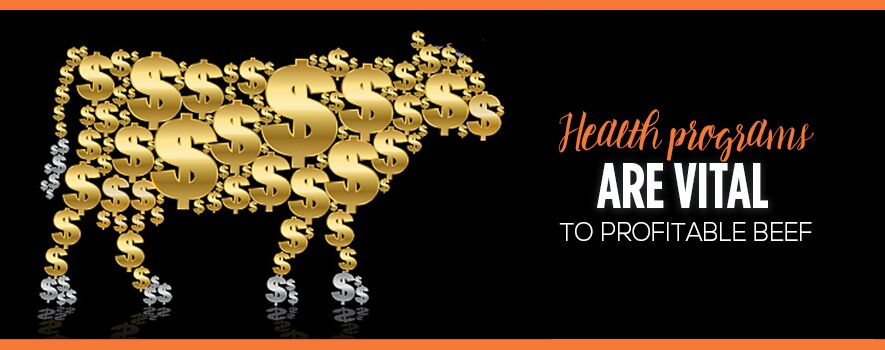by Twig Marston, Technical Sales Field Manager
Health programs are vital to a profitable herd. It seems simple, but really it is one of the more complex management decisions producers need to implement. Nonetheless, producers need to build herd health protocols that prevent disease, treat illnesses and injuries, as well as promote animal well-being.
There are a few basic steps for a successful program. Developing relationships with a veterinarian and other livestock professionals is important. Other components include sanitation, observation, vaccination and proper application. Together procedures and protocols can be implemented that assure healthy, productive beef production units.
Some producers think that once a vaccine or antibiotic is given the worries of sickness are gone. In actuality, vaccinations are only a part of a comprehensive health plan. Health programs include an array of health products, nutrition, procedures and administrations that make a plan work effectively.
Three areas of emphasis should make up a comprehensive health plan.
- Prevent exposure to disease. Biosecurity for calving areas, processing areas and receiving pens decrease the likelihood of disease introduction. The more intense the operation, the more intense the preventive program needs to be. For cow-calf operations with disease problems shortly after calving, they should consider the plans like the University of Nebraska’s Sandhill Calving System. You can find details on their website at unlbeef.edu.
- Keep disease resistance high. Nutrition, facilities and management should keep resistance to disease high at all times. Much of the recent press on low-stress animal handling has been directed toward high disease resistance. Vaccination programs can be tailored to give resistance to specific diseases. Nutrition has also been shown to provide a key role in disease resistance. The Texas Ranch to Rail data indicated the importance of nutrition on a herd health program. That data reported that 90 percent of the ranches that had no calves treated during the feed out period (no sick cattle) came from cow herds that had a complete mineral program, like VitaFerm®.
- If disease appears, prevent its spread. Treating and segregating affected animals immediately can drastically reduce losses to disease. By having a diagnoses and taking the recommended actions as soon as possible, producers will greatly improve the odds of recovery and reduce the onset of a disease outbreak.
The negative effect of disease is felt throughout the performance phase. Disease not only decreases herd fertility, but also weaning weights and calf survivability. NAMHS (2007-08) data indicates about 4% of the calves born alive are lost prior to weaning, and a major cause (39.6%) are from respiratory problems. Vaccination, treatment and nutritional programs have been shown to improve disease resistance and optimize reproductive success.
The Iowa Tri-County Steer Carcass Futurity has also given us insight into the effects of calf health at weaning and the feeding period. With the records of more than 6,000 calves, they have been able to determine that having to treat for respiratory disease can decrease average daily gain by .07 lb. per day or more, decreases feed efficiency and drives up the cost of gain. Disease was also shown to reduce the quality grade of carcasses.
In summary, comprehensive herd health programs can be tailored to each operation. Veterinarians can be a tremendous help in establishing and maintaining a successful program. Knowledge and experience are what build a comprehensive herd program by combining health, nutrition and management techniques.
The BioZyme nutrition team is available to help you develop a nutrition program that is best for your herd. For more information about nutrition services, visit https://vitaferm.com/services/.



